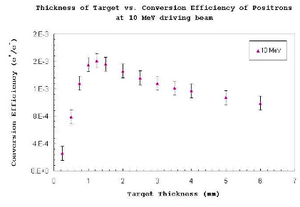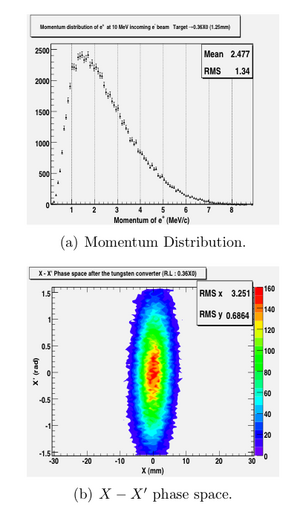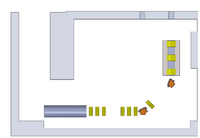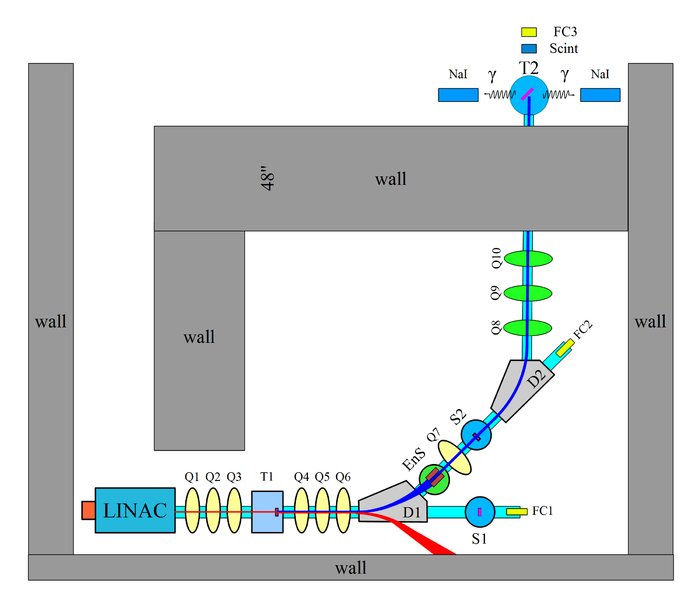Difference between revisions of "Positrons Using The HRRL"
Jump to navigation
Jump to search
| Line 29: | Line 29: | ||
[[File:HRRL_BeamLine_20101022.png | 200 px]] | [[File:HRRL_BeamLine_20101022.png | 200 px]] | ||
| − | [[Image:BeamLine_Yim_10-14-10.png| | + | [[Image:BeamLine_Yim_10-14-10.png| 700 px | Fig.1 HRRL beamline for positron generation.]] |
[[Positrons]] | [[Positrons]] | ||
Revision as of 08:45, 12 April 2012
The purpose of this research is to evaluate the veracity of a positron beam line using the quad triplet method to collect positrons produced when a 10 MeV electron beam impinges on a 1.25 mm thick Tungsten target.
Positron Beam Properties
Tungsten thickness
The optimal Tungsten target thickness to produce positrons using a 10 MeV incident electron beam appears to be 1.25 mm.
Reference Serkan Thesis
Positron Momentum and Phase space distribution
Assuming a 10 meV electron beam having a gaussian spot size with a = 3mm.
We may want the achromat to have a 10% or less energy spread to measure the above distribution but we will also wan to open the slits to maximize positron current. This may mean accepting an energy spread of 30%.
Reference serkan thesis
Measured HRRL emittance
HRRL beam line



